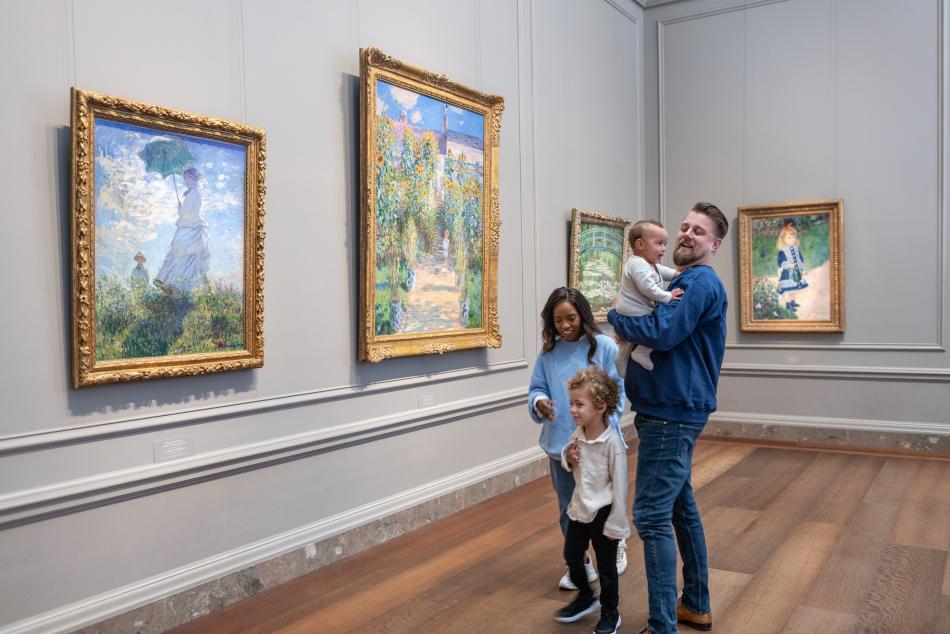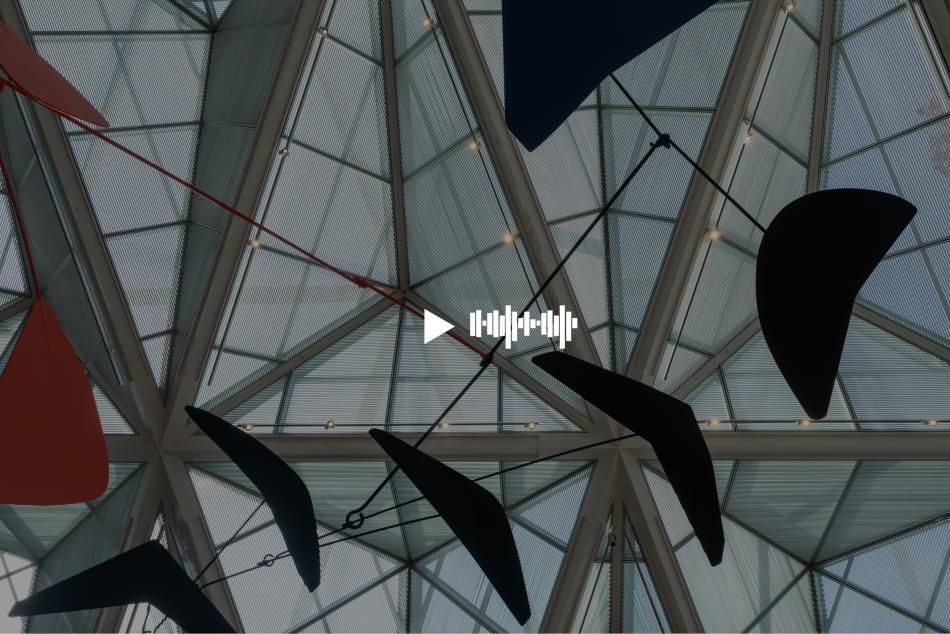NARRATOR:
A principios del siglo XX, Londres era una ciudad muy ajetreada. Su famosa neblina —en realidad efecto de una gran polución— generaba una atmósfera mística que los artistas buscaban capturar en sus pinturas. En esta vista del Puente de Charing Cross, André Derain utilizó el verde para representar el Palacio de Westminster, sede del parlamento inglés, a la distancia y, a la derecha, la alta torre del Big Ben. La armadura de acero del puente se encuentra definida por cruces rojas.
Harry Cooper, curador y director de arte moderno.
HARRY COOPER:
Está poniendo de relieve los aspectos industriales del Támesis. Vemos la ciudad en pleno funcionamiento. Es agresiva, pujante. Hay una batalla de colores. Distintos tipos de pincelada compiten por nuestra atención, y creo que casi se puede entender la pintura como el diagrama de una batalla: sus zonas, sus fronteras. Esa línea curva que baja del puente en el centro divide las pinceladas amarillas, a la derecha, de la gran zona de rojo y verde a la izquierda. Es una pintura que trata sobre la competencia, y no hay lugar donde uno pueda descansar la mirada al observarla.
NARRATOR:
Con esas pinceladas caóticas y agresivas, es posible que Derain intentara transmitir algo acerca de Londres en sí misma. Al representar el paisaje en tonalidades altas, muy distantes de la realidad, nos muestra la ciudad como una serie de formas prácticamente abstractas.
Derain y Henri Matisse fundaron conjuntamente el movimiento fauvista. Las fauves —o “fieras salvajes”— buscaban liberar el color y la pincelada de las limitaciones del impresionismo, que se preocupaba principalmente por registrar en pintura los efímeros efectos de la luz y el color. Compare la obra de Derain con una escena de Londres similar expuesta a su lado, pintada por Claude Monet unos años antes.
HARRY COOPER:
Monet había inventado el impresionismo, el arte del ocio, de capturar nuevos tipos de belleza y placer. El fauvismo realmente se enfocaba en otra cosa, intentaba hacer algo nuevo… intentaba, de alguna manera, desafiar al espectador. Cada generación modernista intentó superar a la anterior.




